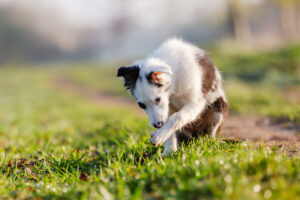Bringing the beauty of nature indoors with houseplants is a wonderful way to enhance your living space. However, for pet owners, it’s crucial to choose plants that are safe for your furry companions. Many common houseplants contain toxins that can harm cats, dogs, or other pets if ingested. Thankfully, there’s a wide array of stunning and pet-friendly options to choose from. Let’s explore some of the best choices for your home:
Safe and Stylish Pet-Friendly Houseplants
- Spider Plant (Chlorophytum comosum):- With its long, arching leaves and adorable “spiderettes” (baby plants), the spider plant is a popular choice for its easy care and air-purifying qualities. It’s non-toxic to pets, making it a safe and visually appealing addition to any room.
- Boston Fern (Nephrolepis exaltata):-The Boston fern, with its lush, feathery fronds, adds a touch of elegance to hanging baskets or tabletop displays. It thrives in humid environments and is safe for both cats and dogs.
- African Violet (Saintpaulia ionantha):-Known for its vibrant flowers and fuzzy leaves, the African violet is a charming and compact houseplant. It’s non-toxic to pets and relatively easy to care for, making it perfect for adding a pop of color to your home.
- Prayer Plant (Maranta leuconeura):-The prayer plant’s unique foliage, which folds up at night like praying hands, makes it a captivating addition to any space. This pet-safe plant prefers moderate light and humidity, making it a good choice for bathrooms or kitchens.
- Friendship Plant (Pilea peperomioides):-The friendship plant, also known as the Chinese money plant, boasts round, coin-like leaves on slender stems. It’s a low-maintenance and non-toxic plant that symbolizes good luck and prosperity.
- Peperomia:- Peperomia comes in various shapes and colors, from the watermelon peperomia with its striped leaves to the ripple peperomia with its textured foliage. These compact, easy-care plants are safe for pets and add a touch of whimsy to any space.
- Calathea:- Calathea, also known as the prayer plant, features striking foliage with intricate patterns and colors. These stunning plants thrive in moderate light and humidity, making them a great choice for bathrooms or kitchens. They are non-toxic to pets and add a touch of the tropics to any home.
- Ponytail Palm (Beaucarnea recurvata):- The ponytail palm is a slow-growing succulent with a bulbous base and long, slender leaves that resemble a ponytail. It’s drought-tolerant and safe for pets, making it a low-maintenance and stylish option for any home.
Tips for Keeping Your Pets Safe with Houseplants
- Research: Always research any plant before bringing it into your home to ensure it’s non-toxic to your specific pets.
- Placement: Place plants out of reach of pets, especially those who are curious or prone to chewing.
- Supervision: Supervise your pets around new plants to ensure they don’t try to eat them.
- Alternatives: Provide your pets with alternative sources of entertainment and stimulation to discourage them from nibbling on plants.
Conclusion
By selecting pet-friendly houseplants, you can create a lush and inviting environment that’s safe for all members of your family, both human and furry. These stylish and non-toxic options will add a touch of nature to your home without compromising your pet’s well-being.




